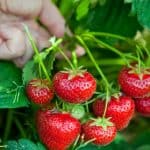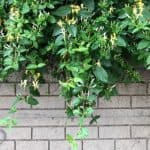Last updated on March 1st, 2022
Our site is reader supported, this means we may earn a small commission from Amazon and other affiliates when you buy through links on our site.
If your Hydrangea leaves have started to wilt it is usually an environmental problem, for example, too much sun exposure as they prefer a shady position or not enough water, especially when grown in containers. Applying too much fertiliser can also cause the leaves and flowers to wilt.
It is incredibly frustrating to work very hard in cultivating your Hydrangeas only to see its leaves drooping, wilting or turning brown. Newly planted Hydrangeas can quickly wilt from lack of water because they have very restricted roots balls, however, fungus and pests can also be a cause. Below we will go over this in more detail as well as going discussing a few other reasons this might be happening and how to overcome the problem.
Hydrangea leaves turning brown
Lack of water – especially on newly planted shrubs
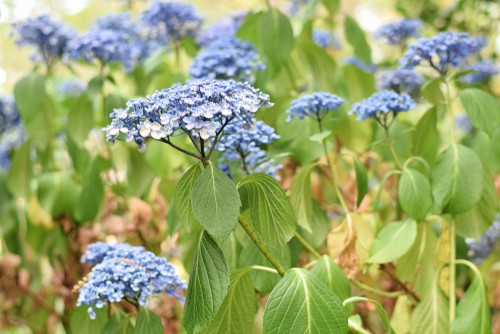
One reason the leaves on your Hydrangea might be turning brown is because of an issue during transplantation. If you recently transplanted your Hydrangea to a new spot, whether from an existing area in your garden or from a nursery, it could simply be turning brown because it doesn’t have enough water.
This is especially common when you purchase a Hydrangea from a nursery or garden centre because the potting soil that they use in nurseries is typically very high in peat moss and this means it dries out quickly, so if you see that the roots are compact and woven together, you want to try and loosen them before you plant your Hydrangea. If you didn’t do that before you planted, don’t panic. You just need to make sure that you keep the soil uniformly moist from that point onward until it takes and has got some new roots out.
You can learn more about growing Hydrangeas by clicking here.
Consider setting up an automatic watering system
- Product 1: Complete watering kit providing a great solution to watering borders, hedges and vegetable gardens for an area up to 10m²
- Product 1: Easy to Install in just 15 minutes, due to ‘Push Fit’ design
- Product 1: Combine with any water controller for Automatic Watering
- Product 1: Modular in design so kits can be easily connected together to make a larger system
- Product 2: Easy to install Universal Dripper ideal for watering borders, hedges and vegetables patches
- Automatically waters up to 20 containers
- Includes the Select Controller, which has a manual watering function, allowing you to water whenever your plants need it. Includes 16 pre-set programs to supply water from once a week up to four times a day
- Drippers deliver water directly to the roots reducing water wastage
- Easy to install as pipes can be easily cut and joined together depending on where you need to water
- Regular focused watering keeps plants healthy and less prone to disease
Fungus – black spots on the leaves – provide good air circulation
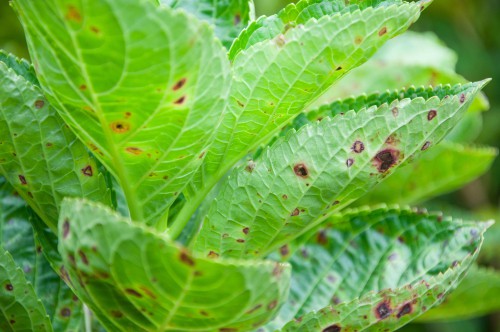
Another reason that the leaves on your Hydrangea are turning brown could be a fungal infection. There are different types of fungus that target the Hydrangea and the results you see are brown spots on the leaves. The first step you want to do is avoid watering the leaves and water specifically at the base because any excess water could leave the plants succeptable.
Simultaneously you want to choose to water in the morning or evening rather than in the afternoon when the sun is at its highest. Remove any leaves that have these brown spots and any debris that has been dropped underneath the Hydrangea. Fungus needs a dark, moist area in which to thrive so don’t provide an environment for them.
If you are going to remove any part of the Hydrangea make sure you disinfect your pruners before doing so because this will prevent you from accidentally transferring infection from one branch or leaf to another. If you have enough space in your garden, make sure that you give 2 metres of space in between one Hydrangea and the next to improve air circulation because this also helps reduce fungus.
Recommended fungicide
- Systemic protection and control of blackspot, powdery mildew and rust
- Use on roses and other flowering or ornamental plants
- Protects new growth and protects plants for over 3 months, when used at intervals recommended in usage instructions
- Use between March to September
- Apply using a garden pressure sprayer washed before and after use
Hydrangea leaves wilting
If the leaves on your Hydrangea are wilting, and in some cases turning brown concurrently, this could be indicative of toxicity poisoning. If you use too much fertiliser it could cause these symptoms, and as a direct result increase the susceptibility your plants have to infection. It is recommended that you do not use more than two cups of a 10-10-10 fertiliser for every 9.2 square metres. So if you are using fertiliser in a smaller area where you have Hydrangeas in pots you might actually be using too much. There is a significantly high risk for toxicity during the summer when your Hydrangeas are exposed to sunlight. In general, applying a general fertiliser in spring, in measurement as stated on the box, is often more than enough for Hydrangeas.
Hydrangea leaves drooping – caused by pests
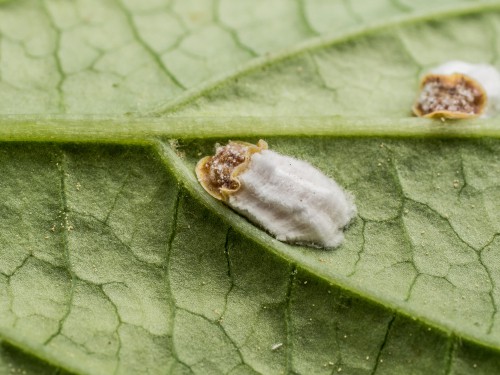
If you notice your Hydrangea leaves are drooping, shrivelling up and turning brown, you might have a pest problem, you may also notice a sticky substance known as honeydew. This is indicative of scale insects, also known as Hydrangea scale or aphids, and the solution is to clean off every pest with either a direct stream of water or a mixture of water and dish soap.
If you are using water to remove them physically, be aware of the power of the stream you use. If you spray water at full power it could damage the leaves in the process.
If you use an insecticide be aware of the fact that it could kill the insects but scorch leaves as well, so pay particular attention to the ingredients and instructions and never spray in bright sunshine.
Recommended bug killer
- A contact and systemic insecticide that offers protection against a wide range of pests for flowering plants
- Kills all major ornamental insect pests including whitefly, greenfly, blackfly and other aphids, scale insects, mealy bugs, red spider mites, caterpillars and lily beetles
- Also offers a useful level of control of thrips
- Its systemic action protects treated plants from such pests for up to three weeks
- For use outdoors and in greenhouses and conservatories
Last update on 2025-03-31 / Affiliate links / Images from Amazon Product Advertising API


![HOZELOCK - Drip Watering Kit 20 Pot : Complete Stand-alone System with Select Controller Programmer, Ideal for Potted Plantsand Window Boxes, for Precise, Water-saving Watering [2803 0000]](https://m.media-amazon.com/images/I/51f1dENMSSL._SL160_.jpg)


